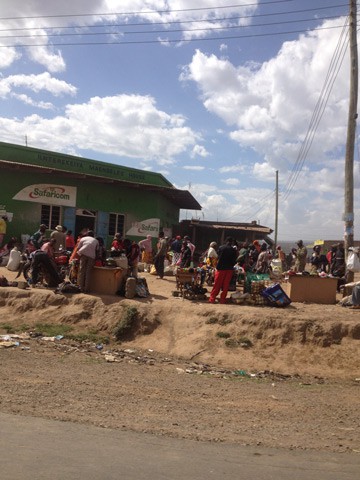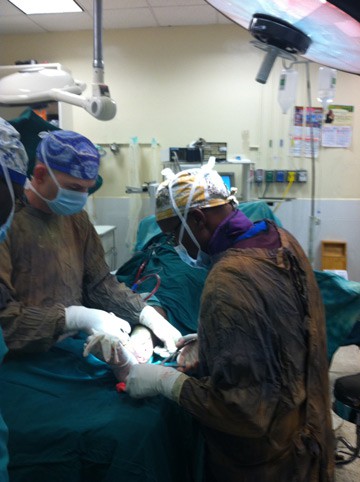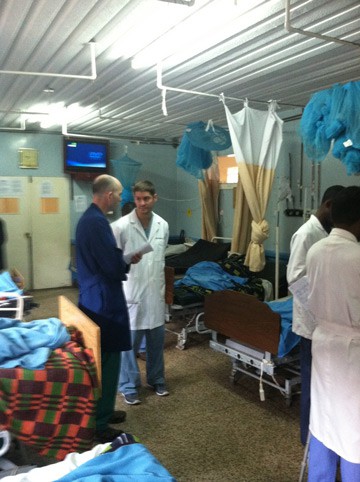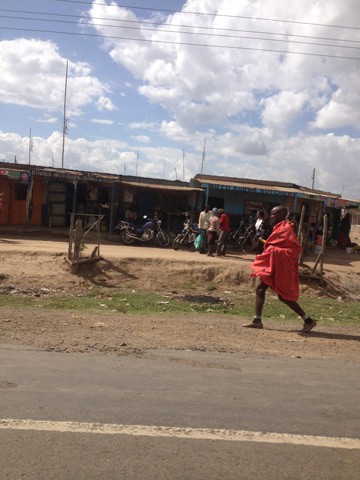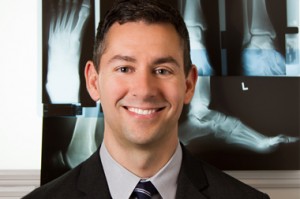Ulnar nerve entrapment at the elbow, also known as cubital tunnel syndrome is a condition where the ulnar nerve in your arm becomes irritated or compressed. This nerve is one of the three important arm nerves that travel from your neck all the way down into your hand. Constriction can occur in a number of places along this path, and depending on the site of irritation or compression, this pressure causes numbness, elbow pain, hand and wrist discomfort, or finger pain. When the ulnar nerve is compressed at the elbow, it is called, Cubital Tunnel Syndrome. This condition is now also commonly called “cell phone elbow”.
Causes of Cubital Tunnel Syndrome
The ulnar nerve gives you feeling in your little finger and half of your ring finger. Additionally, it controls the muscles of the hand that allow you to pick stuff up and do other fine movements. It also controls bigger muscles of the forearm that allow you to grip objects. The exact cause of cubital tunnel syndrome is not completely understood, but it is believed that the ulnar nerve is susceptible to compression at the elbow because it passes through a narrow space where there is not much tissue for protection.
Keeping your elbow bent for long periods of time (like when you hold a cell phone to your ear) may cause ulnar nerve irritation and symptoms. Other common reasons for this condition include:
- -A direct blow to the inside of the elbow or “hitting the funny bone”
- -Fluid buildup in the elbow that leads to swelling and nerve compression
- -Irritation when the nerve slides in and out of place with bending
- -Pressure on the nerve from prolonged leaning on your elbow
- -Sleeping with your elbow bent
Home Remedies for Cubital Tunnel Syndrome
The simplest thing you can do is to lay down your cell phone and avoid other activities that require you to bend your arm for long periods of time. Also, make sure your computer chair is not too low, and do not rest your elbow on the armrest a lot. Keep your elbow straight when sleeping, if possible, by wrapping a towel around your elbow region or wear an elbow pad backwards.
What the Doctor May Do at Your Visit
If the orthopedic specialist suspects you have cubital tunnel syndrome, he may order special X-rays to see if bony deformities are the cause of the problem. Additionally, he may order electrical nerve conduction studies to determine how well your ulnar nerve is working and to identify exactly where the compression site is located.
Nonsurgical Treatment
Sometimes, non-steroidal anti-inflammatory medicines can alleviate your symptoms. The orthopedic specialist will want to decrease the swelling around the nerve with these medications. Also, he may inject a “steroid”, like cortisone around the ulnar nerve area of compression. It is not uncommon for the doctor to recommend a brace or splint for you to wear at night to keep your elbow straight. Finally, there are certain nerve gliding exercises that may help your nerve slide through the cubital tunnel so that symptoms can improve or resolve completely. These special exercises help keep the wrist and forearm from getting stiff and sore.
Surgical Treatment
For some people, nonsurgical measures are not enough to relieve the symptoms of cubital tunnel syndrome. In these cases, the orthopedic specialist recommends surgery to take the pressure off the ulnar nerve. Also, surgery is indicated for those who have severe nerve compression or muscle wasting due to the condition. The surgical procedures available include:
Endoscopic or Open Cubital Tunnel Release: In this surgery, the ligament “roof” of the cubital tunnel is divided. This allows for an increased tunnel space and a decreased nerve pressure. This procedure minimizes the dissection around the nerve and allows for the quickest recovery. Dr. Weil is one of the only surgeons in the northwest performing Endoscopic Cubital Tunnel Ulnar Nerve Decompression surgery. This method is the least invasive and allows for the fastest recovery of all ulnar nerve decompression surgeries. Dr. Weil was highlighted on King 5 news Health Link for his treatment of cubital tunnel syndrome.
Ulnar Nerve Anterior Transposition: With this procedure, the nerve is moved from the cubital tunnel and placed in front of that region. Ulnar nerve anterior transposition allows the nerve to lie under the skin and fat but on the muscle, within the muscle, or under the muscle. Placement will depend on your particular problem and the surgeon’s choice.
Medical Epicondylectomy: One great option to release the ulnar nerve is to remove part of a bony section called the medial epicondyle. This technique prevents the nerve from becoming caught on one of the bony ridges so that it can adequately stretch with bending motions.
Surgical Recovery
If you must undergo a surgical procedure, the orthopedic specialist may put you in a splint following the surgery. For the endoscopic technique no splint is required, for the transposition technique, you may have to wear it as long as 6 weeks. Also, your doctor may recommend that go to physical therapy to learn exercises that will help you regain strength and motion in your arm.

 Just about a 4-hour drive out of Nairobi, Tenwick Hospital is a rural 300- bed hospital serving a very large undeserved area.
Just about a 4-hour drive out of Nairobi, Tenwick Hospital is a rural 300- bed hospital serving a very large undeserved area. 